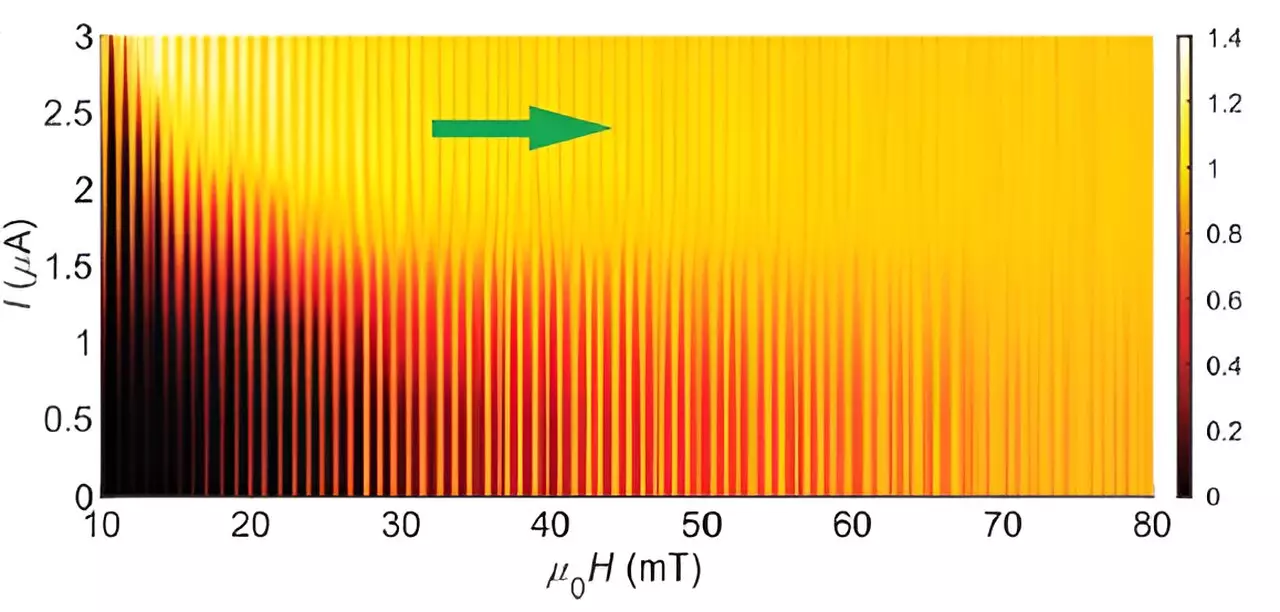Topological materials have revolutionized the way scientists think about electronic properties and the behavior of electrons. Defined by their unique wavefunctions, these materials exhibit behaviors that can only be described through the lens of topology—a branch of mathematics that studies properties preserved through deformations, twistings, or stretchings of objects. In contrast to conventional materials, where electron behaviors are relatively well understood, topological materials like molybdenum telluride (MoTe2) showcase mysterious edge states that emerge at the interface of the material and its environment. This phenomenon occurs because the wavefunction associated with the electrons must ‘unwind’ at the material’s periphery, resulting in distinct behaviors observed in edge states compared to the bulk material.
The duality of behaviors in topological materials prompts excitement in the field of condensed matter physics. When these materials take on superconducting properties, they display a rich tapestry of interactions, especially when considering how edge superconductivity manifests alongside bulk superconductivity. The analogy of two pools of water closely positioned but refusing to merge illustrates this intriguing scenario within topological superconductors, where interactions can give rise to unprecedented states of matter.
Unraveling the Properties of MoTe2
Recent research published in *Nature Physics* sheds light on the intricate behaviors within MoTe2, particularly focusing on the superconducting edge currents. Superconductors operate on the principle of paired electrons, a phenomenon often likened to a dance where electrons bind together through what is termed “the glue.” This glue facilitates mobility, allowing electricity to flow with minimal resistance, a property highly desirable for various technologies ranging from computing to energy applications.
What sets the superconducting edge currents in MoTe2 apart is their impressive ability to endure significant fluctuations in this adhesive force. When under the influence of external magnetic fields, these edge currents exhibit oscillatory behavior, revealing a rhythm distinct from that of the bulk superconducting state. These oscillations are not merely marginal details; they reflect profound fundamental principles underlying the way superconductivity operates within topological materials.
Another crucial aspect is the relationship between the pair potentials of different materials interacting with MoTe2, such as niobium (Nb). Researchers have demonstrated that by depositing Nb onto MoTe2, the inherent pair potential is augmented, amplifying the effectiveness of superconducting properties. The unexpected outcome is that while this pairing enhances current oscillations, it also unveils a conflict between the different pair potentials, leading to complex interactions that researchers can study for further insights into these intriguing systems.
The Role of Edge Supercurrents in Quantum Technologies
The implications of understanding edge supercurrents extend well beyond theoretical physics; they open doors to groundbreaking developments in quantum technologies. The ability to manipulate and control anyons—special particles that emerge in topological superconductors—offers the potential to enhance the fidelity and resilience of quantum computing operations. Unlike conventional particles, anyons retain a ‘memory’ of their positional arrangements, allowing for error-resistant computations.
This unique characteristic of anyons suggests their integration into new forms of quantum computation, potentially leading to robust and energy-efficient electronics. The study of edge supercurrents in MoTe2 serves as a crucial step toward employing these materials for practical applications in next-generation technology, including quantum computers that can perform calculations surpassing the capabilities of traditional systems.
The exploration of topological materials, particularly regarding superconducting edge states in MoTe2, has unveiled a landscape rich with potential for innovation. The project into how different pair potentials interact and affect electron behaviors serves not only as a powerful scientific inquiry but also as a precursor to future technological revolutions. With ongoing research, scientists aim to deepen their understanding of these interactions, paving the way for the rollout of reliable quantum technologies and energy-efficient electronics that harness the unique properties of topological superconductors. As studies continue, the future of material science and quantum computing looks promising, all stemming from the complex intricacies presented by topological materials.

